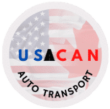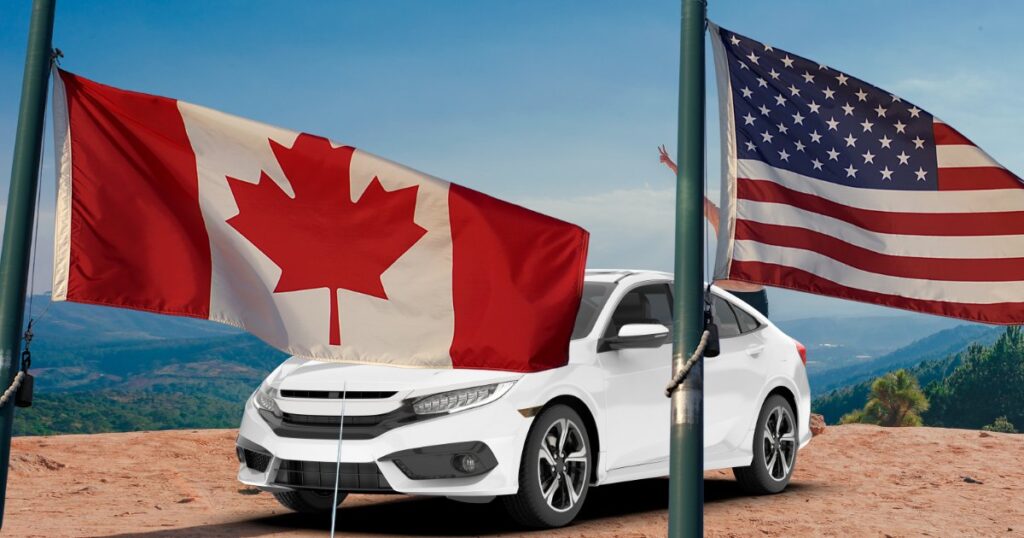In today’s global economy, even small changes in trade agreements or tariffs can ripple across entire industries—including cross-border auto transport. U.S. policy shifts, retaliatory tariffs from Canada, and evolving USMCA compliance rules can make a once-straightforward vehicle shipment far more complex and unpredictable.
If you’re moving a vehicle across the border, whether for business or personal reasons, it’s essential to stay ahead of trade-related disruptions. By understanding current trade dynamics and how they impact auto logistics, you can avoid costly delays and unexpected fees.
So, how can you ensure your vehicle crosses the U.S.–Canada border smoothly when trade policies are constantly shifting? Let’s dive in.
How U.S. Trade Policy Shifts Affect Vehicle Transport
Trade policy in North America is anything but static. From presidential directives to congressional amendments, U.S. trade policy shifts frequently influence how goods—including automobiles—move across the border.
For instance, a recent push toward reshoring manufacturing has increased tariffs on imported vehicle parts. These policies indirectly affect cross-border auto shipments by raising costs for carriers and slowing down border inspections as compliance is checked more closely.
At the same time, any policy promoting “Buy American” initiatives might tighten scrutiny on Canadian vehicle imports, even if they meet safety and emissions standards.
Retaliatory Tariffs from Canada and Their Ripple Effect

Canada has responded to certain U.S. trade policies with its own set of retaliatory tariffs, particularly during steel and aluminum disputes. While these tariffs are not aimed directly at individual vehicle owners, they still impact the cross-border auto shipments industry by increasing operational costs for transporters and parts suppliers.
Here’s how those retaliatory tariffs trickle down to vehicle shippers:
- Higher transport rates: To offset increased costs, carriers may raise shipping fees.
- Longer lead times: Disrupted supply chains for vehicle parts and trailers may reduce fleet availability.
- Limited options: Some companies might temporarily halt cross-border service if it’s no longer profitable.
USMCA Compliance: What You Need to Know
The United States–Mexico–Canada Agreement (USMCA), which replaced NAFTA, has its own set of rules that affect cross-border auto shipments. One of the biggest areas of focus is the origin of vehicle components. For a car to be considered “North American” under USMCA, at least 75% of its components must come from one of the three member countries.
What does that mean for you as a customer?
If your vehicle doesn’t meet USMCA origin rules—or if customs documentation fails to prove compliance—it could trigger delays or even import taxes. That’s why working with knowledgeable transport providers is critical.
What We’re Seeing Now at the Border

Documentation Scrutiny Is on the Rise
Border officials are more cautious than ever. Any documentation inconsistencies or missing compliance certifications can result in time-consuming secondary inspections. Vehicles that were once cleared in minutes may now take hours or even days if red flags are raised.
Tariff Codes Matter More Than Ever
Improper classification of vehicles under the Harmonized Tariff Schedule (HTS) can lead to fines or shipment rejections. Transport companies that fail to use accurate codes risk legal consequences and shipment delays.
Common Trade-Related Shipping Scenarios
While most customers won’t face issues if their documents are complete and correct, here are some situations where trade policy volatility creates friction:
| Scenario | Impact on Cross-Border Shipments | Preventive Action |
|---|---|---|
| Sudden tariff announcement | Increased cost for in-transit vehicles | Choose carriers who absorb or forecast tariff risk |
| Incomplete origin documentation (USMCA) | Vehicle held for inspection | Confirm supplier or manufacturer certification |
| Regulatory updates on emissions/imports | Delay or denial of entry at customs | Use up-to-date compliance checklists |
| HTS code misclassification | Fines or return of shipment | Work with knowledgeable customs brokers |
Four Strategic Areas to Focus On
1. Documentation Accuracy
Every cross-border shipment hinges on paperwork. Customs officers won’t hesitate to delay your vehicle if even minor errors are found.
- VIN mismatches, unsigned bills of sale, or incomplete import forms can stall progress at the border. Always double-check your documents before pick-up.
- Professional auto shippers are now using digital document verification tools to avoid manual errors and reduce human oversight.
2. Tariff Planning
Tariffs can be applied mid-shipment depending on political developments. While you can’t control global economics, you can reduce the surprise factor.
- Request an all-inclusive quote that accounts for potential tariffs so you won’t be caught off guard.
- Monitor news from trade agencies and government sites for updates, especially during election seasons or policy reviews.
3. Choosing the Right Transport Provider
Your transporter is your first line of defense against border issues. The right company will have processes in place to adapt to trade changes.
- Ask if the provider is experienced in handling USMCA documentation and HS code classification.
- Look for companies with direct contact lines to border agents and customs brokers for real-time problem-solving.
4. Route and Timing Flexibility
Trade disruptions often lead to bottlenecks at major border crossings. Having a backup plan can make all the difference.
- Some carriers now offer dynamic rerouting based on live border traffic and policy shifts.
- Schedule your shipment during low-volume months like mid-January or late September to avoid peak congestion.
Proven Practices for Reliable Cross-Border Vehicle Shipping
With trade volatility expected to continue, here’s how you can stay ahead of the curve:
- Stay informed about trade negotiations and agreements that may impact vehicle imports and exports.
- Use carriers that offer tariff forecasting or pre-payment options.
- Consolidate your paperwork in digital format to streamline communication with customs and your transporter.
Frequently Overlooked Factors That Can Cost You
Many customers focus solely on the price tag—but that’s a mistake when dealing with international logistics.
- Insurance coverage across borders varies. Some U.S.-based policies don’t apply in Canada and vice versa.
- Non-tariff barriers like safety certifications or recall clearance requirements can trigger costly delays if missed.
Key Advantages of Trade-Savvy Transport Services
Transporters familiar with trade regulations give you more than just a ride—they offer peace of mind.
- Up-to-date compliance ensures smoother customs processing and reduced risk of surprise fees.
- Efficient documentation systems cut down on approval time, letting your vehicle move quickly and without issue.
- Strong industry relationships allow your transporter to troubleshoot issues directly with customs officials.
What You Can Do Right Now
If you’re planning to ship a vehicle across the border soon, take these proactive steps:
- Get a written quote with tariff considerations included.
- Ensure your vehicle meets the latest USMCA origin requirements.
- Ask your transporter if they’ve had recent issues with documentation delays or inspections.
Prepared to Ship Confidently Amid Trade Uncertainty?
Are you fully prepared to ship your vehicle across the U.S.–Canada border despite evolving tariffs and trade policies—or are you hoping it all just works out?
Trade policy volatility isn’t going away. By understanding how it affects cross-border auto shipments and working with a partner who stays ahead of the curve, you can avoid delays, fines, and frustration.
For those looking to minimize risk, it’s time to choose smart strategies over shortcuts. And while companies like US Canada Auto Transport can help smooth the ride, your awareness and preparation are what will truly drive success.


